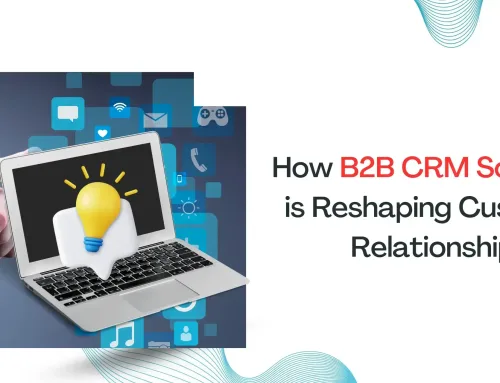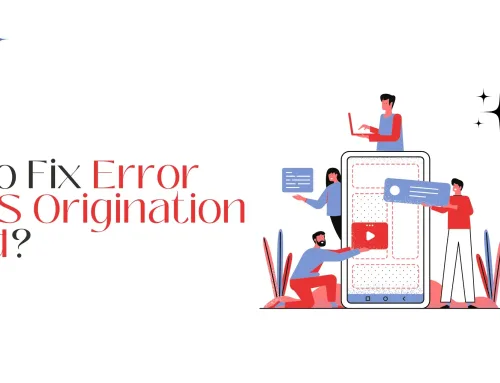Too much information inflow can often become overwhelming, leading to information overload. As organizations strive to stay competitive, the sheer volume of data—from emails to documents and various systems—poses a significant challenge.
This is where ECM platforms emerge as indispensable solutions. Designed to tackle the complexities of information management, ECM platforms offer a comprehensive approach to organizing, accessing, and optimizing data.
In this blog, we delve into how an Enterprise Content Management Platform can be your ally in taming information overload, ensuring a more efficient and focused business environment.
Let’s explore the key features and strategies that make ECM platforms a game-changer in the quest for streamlined information management.
What Is Information Overload And Its Common Sources?
Information overload happens when we’re bombarded with more information than we can effectively process. It’s like trying to sip from a firehose – overwhelming and challenging to manage. This data flood can come from various sources, making it crucial to understand where it originates.
Here are some common sources of information overload:
- Emails: Your inbox can quickly become a digital jungle with a constant stream of emails. Sorting through them becomes a task on its own.
- Documents: Businesses generate a plethora of documents daily. Keeping track of these documents, from reports to memos, can be like finding a needle in a haystack.
- Data from Different Systems: Information comes from multiple systems – sales, marketing, and finance. Integrating and making sense of this diverse data can be a real puzzle.
- Online Communication Tools: While tools like chat and collaboration platforms aim to enhance communication, they can contribute to information overload if not managed efficiently.
- Meetings and Conversations: Verbal information is also a significant contributor. Trying to recall discussions from numerous meetings can be a mental challenge.
What Are The Strategies For Taming Information Overloading with ECM Platforms?
Now that we’ve identified the sources of information overload let’s dive into how Enterprise Content Management platforms serve as the ultimate superheroes, equipped with strategies to bring order to the chaos:
Document Management:
- Organized Repositories: ECM platforms create digital havens for documents, making finding and retrieving information easy.
- Version Control: make sure everyone is on the same page by managing document versions efficiently.
Workflow Automation:
- Streamlined Processes: Automate routine tasks, reducing manual workload and freeing time for more critical activities.
- Task Assignments: Assign tasks within the system, eliminating confusion and ensuring accountability.
Data Integration and Accessibility:
- Centralized Data Hub: ECM platforms integrate data from various sources, providing a centralized hub for easy access.
- User Permissions: Control who sees what, ensuring sensitive information is only accessible to authorized personnel.
Collaboration and Communication Tools:
- Integrated Platforms: ECM facilitates collaboration by integrating seamlessly with communication tools, fostering teamwork.
- Real-time Editing: Collaborate on documents in real-time, avoiding the chaos of multiple versions.
Search and Retrieval Efficiency:
- Advanced Search Features: ECM platforms have robust search functionalities, allowing users to locate specific information quickly.
- Metadata Tagging: Tagging documents with metadata enhances search accuracy and retrieval speed.
User Training and Support:
- Comprehensive Training: Ensure staff is well-trained on ECM usage to maximize benefits.
- Ongoing Support: Provide continuous support to address issues and keep the system running smoothly.
Regular System Evaluation and Updates:
- Adaptability: Regularly assess and update the ECM system to meet evolving business needs.
- Feedback Loop: Implement a feedback mechanism to gather user insights for continuous improvement.
What are the Best Practices for Implementing an ECM Solution?
For a smooth transition and optimal utilization, consider the following best practices:
Thorough Needs Assessment:
- Identify Specific Requirements: Conduct a comprehensive assessment of your organization’s needs to choose an ECM solution that aligns with your goals.
- Involve Key Stakeholders: Get input from different departments to ensure the ECM system caters to diverse needs.
User Training and Change Management:
- Comprehensive Training Programs: Train your team with the necessary skills through training programs tailored to different user levels.
- Effective Change Management: Address resistance to change by communicating the benefits of the ECM solution and involving employees in the process.
Customization for Business Processes:
- Tailor to Fit: Customize the ECM system to align with your specific business processes for maximum efficiency.
- Scalability: Choose an ECM platform that can grow with your business, accommodating future needs.
Clear Data Migration Strategy:
- Data Cleanup: Clean up existing data before migration to ensure only relevant and accurate information is transferred.
- Test Runs: Conduct trial migrations to identify and address issues before the final move.
Security Measures:
- Role-Based Access Control: Enforce role-based access control to restrict access based on job roles, safeguarding sensitive information.
- Encryption Protocols: Employ robust encryption protocols to secure data in transit and at rest.
Continuous Monitoring and Evaluation:
- Regular Audits: Conduct audits to ensure the ECM system operates as intended and data integrity is maintained.
- User Feedback Mechanism: Establish channels for users to provide feedback, allowing continuous improvement.
Integration with Existing Systems:
- Seamless Integration: Ensure the ECM solution integrates seamlessly with existing software and systems to avoid disruptions.
- Interoperability: Choose a solution that supports interoperability with other tools commonly used in your organization.
Vendor Support and Updates:
- Responsive Vendor Support: Select a vendor known for providing responsive support to address any issues promptly.
- Stay Updated: Regularly update the ECM system to benefit from the latest features, security patches, and improvements.
Pilot Implementation:
- Small-Scale Rollout: Conduct a pilot implementation with a smaller group before full-scale deployment to identify and address potential issues.
- Gather Feedback: Use the pilot phase to gather user feedback and make necessary adjustments.
In Conclusion
Unlock the secret to tackling information overload with Enterprise Content Management Platforms. They organize your documents, streamline workflows, and boost collaboration.
Ready for a change? Evaluate how you handle information now and consider trying out ECM solutions. Take the first step toward a more organized and efficient future – it’s time to conquer the chaos!





![Is Cashapp Not Working? [How to Fix]](https://timeforknowledge.com/wp-content/uploads/2023/08/Cash-app-Not-Working-500x383.webp)




